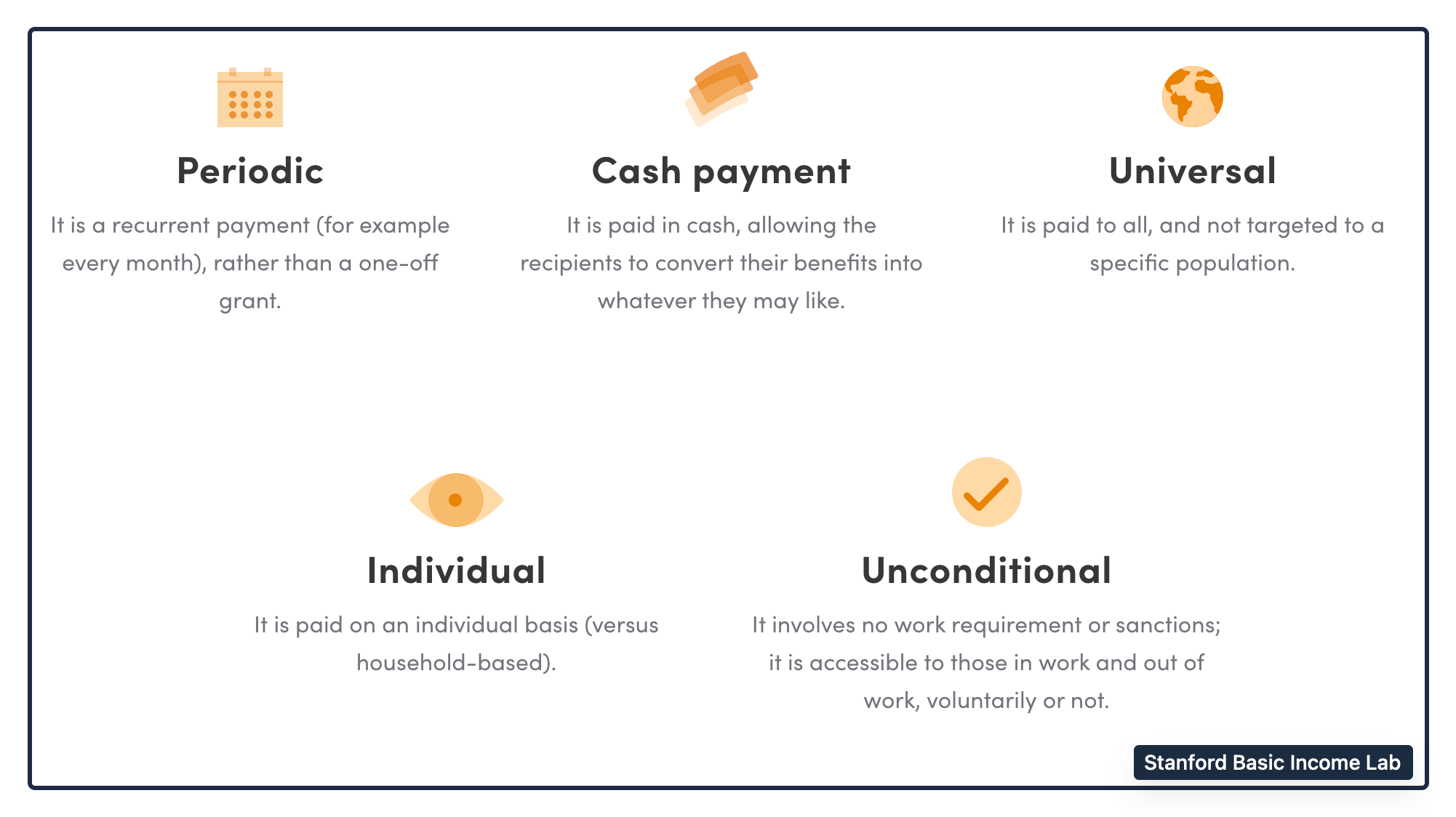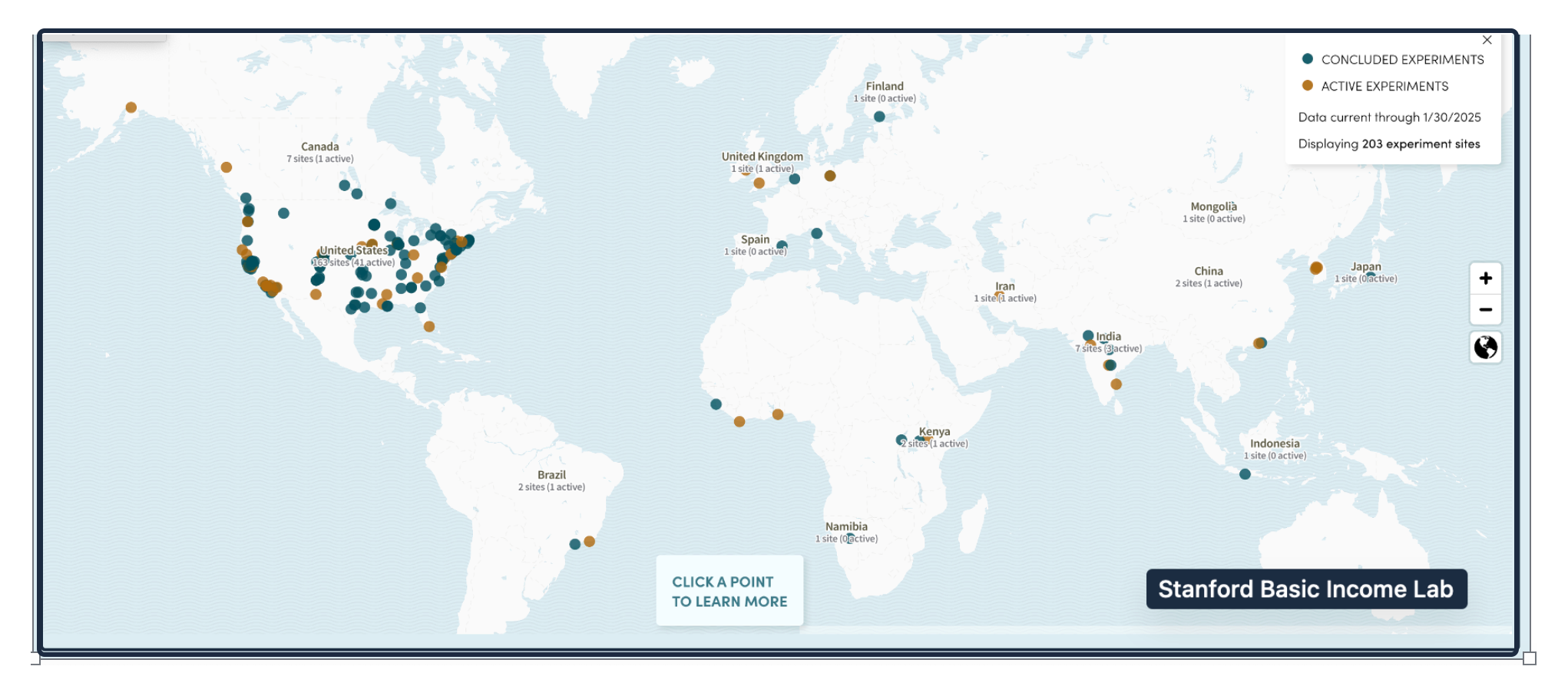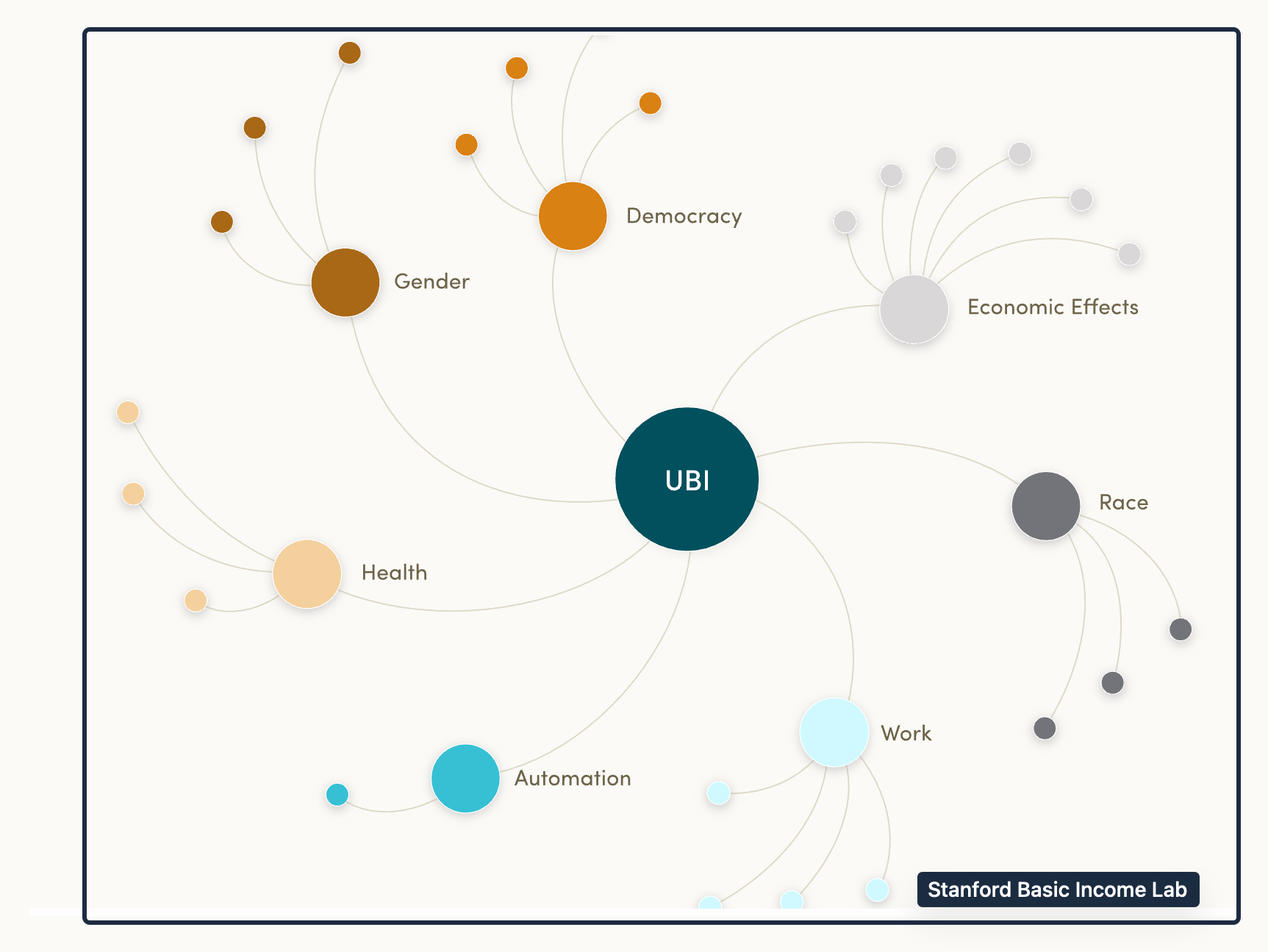
Our Weekly Economic News Roundup: From Uncrustables to Tattoos
October 25, 2025
The Impact of a Wine Tariff
October 27, 2025![]() With concern that artificial intelligence AI could eliminate jobs, the Universal Basic Income has returned to the headlines.
With concern that artificial intelligence AI could eliminate jobs, the Universal Basic Income has returned to the headlines.
A Universal Basic Income
What
The Stanford Basic Income Lab summarized UBI characteristics. You can see that it is a repeated cash payment to an individual. Paid to all, it has no work requirements or preconditions:

Where
According to the Stanford Basic Income Lab, at the beginning of this year, there were 203 concluded or active basic income experiments:

US Cities
Including Durham, North Carolina, Gainesville, Florida, and Birmingham Alabama, a slew of U.S. cities have had UBI programs that are supported by affluent donors and municipal funding, Through the Durham initiative, recipients received $600 a month while In Denver, they were given up to $1,000 a month.
Rwanda
The experience of Give Directly contradicts the dictum to give someone a fishing rod rather than fish. You should give neither–just the money.
Through a control group that got $3 million for a nutrition program and another group that got the $3 million directly, the people that run Rwanda’s Give Directly demonstrated that the UBI works. As they explained, the cash group fared better because households used the money for cows and milk while the nutrition program spent money on education. Saving money, the UBI group did no job training nor education. Instead, the recipients decided how to use their money.
When
The UBI story is an old one. In 1797, Thomas Paine (yes, the Common Sense Thomas Paine) said that adults had the right to a basic income. Leaping to the 1930s, Louisiana Governor Huey Long proposed a $2,000 to $3,000 basic income (equal to 47,000-$71,000 today). We also had a $1,000 check to everyone in the 1972 McGovern platform while 2020 presidential candidate Andrew Yang proposed a UBI.
![]()
Who
A Pew Survey concluded that Republicans are less likely than Democrats to approve of UBI initiatives. Also predictably, younger people have a more favorable opinion as do Blacks, Hispanics, and lower income households. Overall though, 54 percent were against the UBI.
Incentives
Using evidence from CCT (conditional cash transfer) programs, Nobel Economics Prize laureates Abhijit V. Banerjee and Esther Duflo, told us that cash transfers increased work force participation.
Our Bottom Line: Redistribution
In Equality and Efficiency The Big Tradeoff, economist Arthur Okun explained the tension between capitalism and democracy. Similarly, Nobel laureate Angus Deaton told us that when an economy grows, so too will inequality. However, if we want to reduce the inequality, one solution is redistribution through government taxation and programs that shift wealth from the group that is more affluent to those that have less.
But, as always, it is not quite that simple. To see UBI’s impact, we can look among many groups and phenomena:

My sources and more: Thanks to WSJ for reminding me to return to the UBI. From there, I discovered the Stanford Basic Income Lab, the perfect destination for all we need to know about the UBI. After that, this ungated NBER paper provided some research as did Pew, and getting even more specific, at econlife, we looked at Stockton California’s program.
![econlifelogotrademarkedwebsitelogo[1]](/wp-content/uploads/2024/05/econlifelogotrademarkedwebsitelogo1.png#100878)




